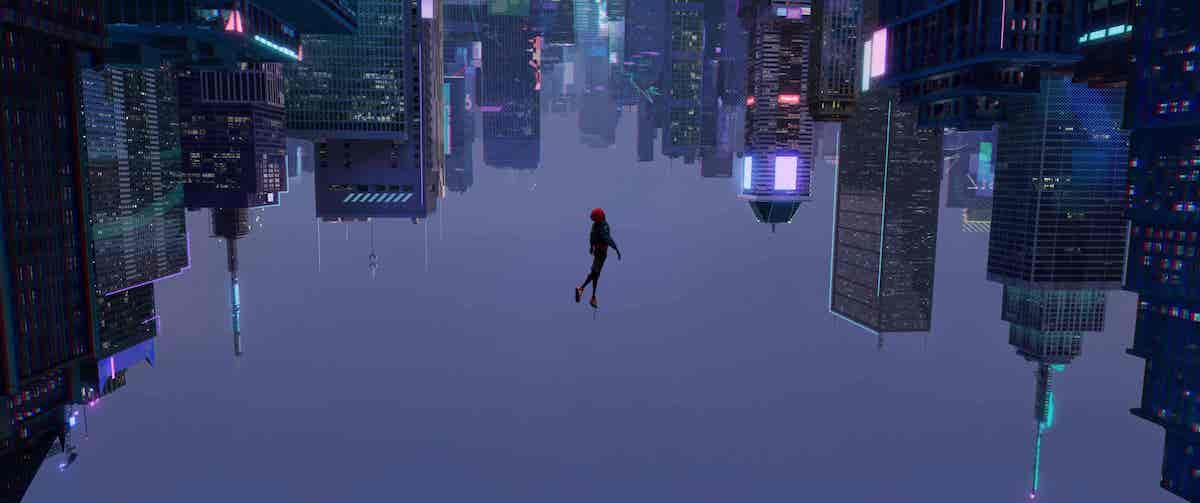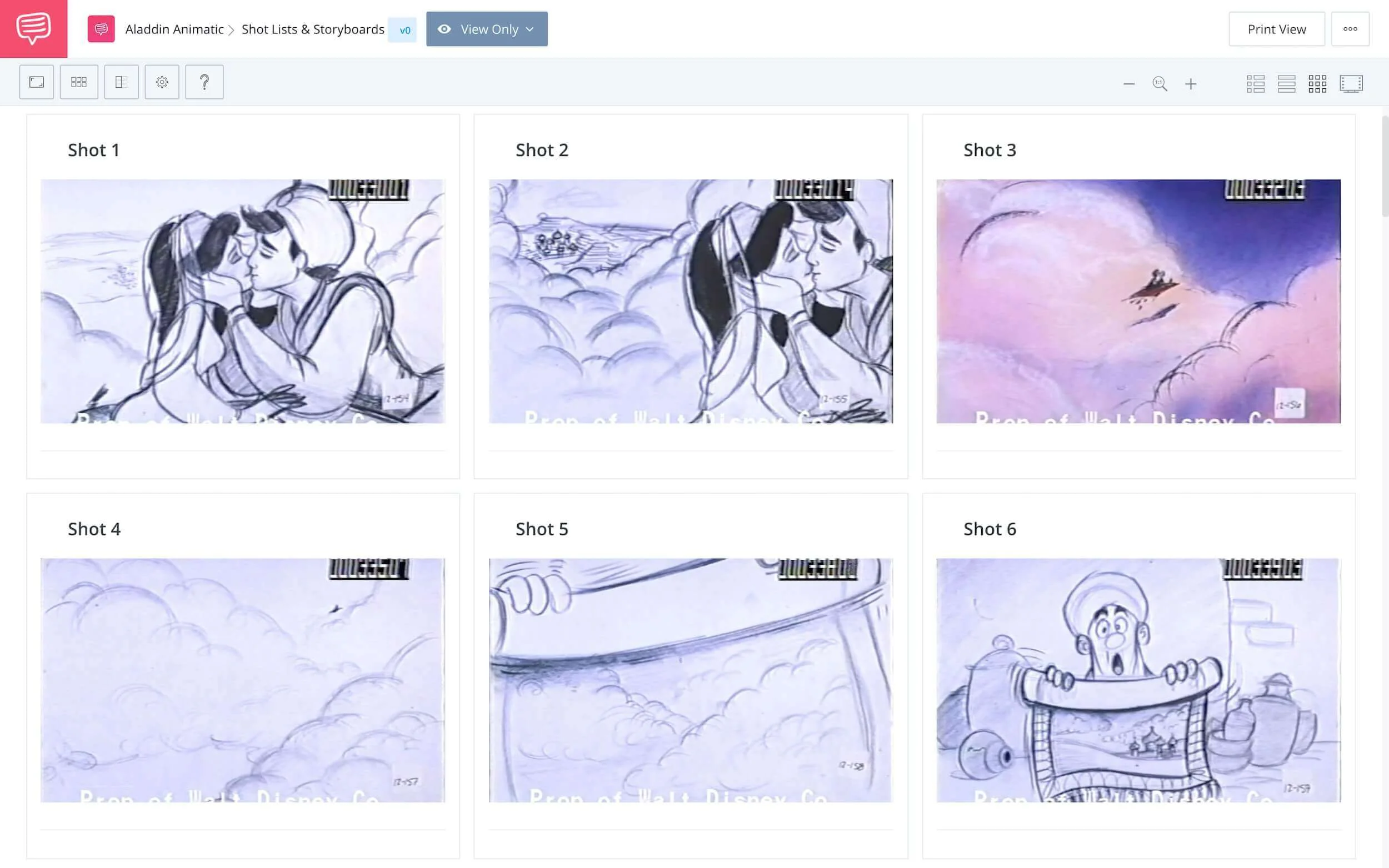Animation has allowed storytellers to tell stories in unique ways. The visceral fantastical worlds in animated films can reignite inspiration and the magic of stories no matter what age. So if you’re a storyteller, or want to be, the animation is a great place to start. So what is animation? And what are the types of animation cartoonists and artists use? Let’s jump in.
How is Animation Made
What is the definition of animation?
The simulation of movement created by a series of pictures is animation. But how it actually works is a bit more complicated than that. Before we get to the various types of animated motion pictures, let's start with an animation definition.
Animation Definition
What is animation?
Animation is a method of photographing successive drawings, models, or even puppets, to create an illusion of movement in a sequence. Because our eyes can only retain an image for approx. 1/10 of a second, when multiple images appear in fast succession, the brain blends them into a single moving image. In traditional animation, pictures are drawn or painted on transparent celluloid sheets to be photographed. Early cartoons are examples of this, but today, most animated movies are made with computer-generated imagery or CGI.
To create the appearance of smooth motion from these drawn, painted, or computer-generated images, frame rate, or the number of consecutive images that are displayed each second, is considered. Moving characters are usually shot “on twos” which just means one image is shown for two frames, totaling in at 12 drawings per second. 12 frames per second allows for motion but may look choppy. In the film, a frame rate of 24 frames per second is often used for smooth motion.
Different Types of Animation:
- Traditional Animation
- 2D Animation (Vector-based)
- 3D Animation
- Motion Graphics
- Stop Motion
Traditional
This is one of the oldest forms of animation in film. It’s sometimes called cel animation. As mentioned above, in traditional animation, objects are drawn on celluloid transparent paper. In order to create the animated sequence, the animator must draw every frame. It’s the same mechanism as a flipbook, just on a grander scale.
Traditional is most often 2D animation. Aladdin, The Lion King, and other earlier cartoons are the best examples of this. *Though, not all 2D is traditional. But we'll get to that in a minute.
In the earlier years, the animator would draw on a table that had a light inside of it, so the creator could see his or her previous animation. While the traditional style is not nearly as prevalent today, drawings are generally done on tablets. And manual coloring hasn’t been used by Disney since The Little Mermaid in 1989.
Here's an explanation of how animator Aaron Blaise creates traditional, hand-drawn animated movies.
What is Animation • Traditional Animation Demo
2D (Vector)
2D animation can fall under traditional animation like most early Disney movies — Pinocchio, Beauty and the Beast, etc. But there is something called Vector-based animation that can be 2D without being traditional.
With Vector-based, the motion here can be controlled by vectors rather than pixels. So, what the heck does that mean?
Images with familiar formats like JPG, GIF, BMP, are pixel images. These images cannot be enlarged or shrunk without affecting image quality. Vector graphics don’t need to worry about resolution. Vectors are characterized by pathways with various start and end points, lines connecting these points to build the graphic. Shapes can be created to form a character or other image. Below is an example.
What is Animation • Vector Style
Vector-based animation uses mathematical values to resize images, so motion is smooth. They can re-use these creations so the animator doesn’t need to keep drawing the same characters over and over again. You can move around these vectors and animate that way.
This is also helpful for animators who aren’t the best drawers. Yes, these people exist.
3D
Today, 3D or computer animation is the most common type. But just because computers have stepped in instead of actual drawings, it’s not necessarily easier. The computer is just another tool, and 3D animation is still a long, intense process.
In 3D animated movies, the animator uses a program to move the character’s body parts around. They set their digital frames when all of the parts of the character are in the right position. They do this for each frame, and the computer calculates the motion from each frame.
Animators adjust and tweak the curvatures and movements their characters make throughout. From Toy Story in 1995 to today’s Coco, 3D animation has become the dominant style in animated films.
What is Animation • Top 3D Animation Movies
3D animation is also unique in that, unlike 2D or other traditional methods, the character’s entire body is always visible. If a character turns to the side, the animator only needs to draw the side profile in 2D animation, but in 3D, the entire body still needs to be visible. So again, even though computers are being used, with new technology comes with way more considerations.
Whether you’re using drawing in 2D or computing in 3D, animators and filmmakers alike look to storyboards to plan out each frame. Unlike live- action, animation movies can’t rely on camera tricks in a shot. Storyboards are the lifeline for creating animation. Here are the storyboards used for Disney's classic animated feature Aladdin organized in StudioBinder’s storyboard tool.
Aladdin • Magic Carpet Scene • View Storyboard
Motion Graphics
Motion Graphics are pieces are digital graphics that create the illusion of motion usually for ads, title sequences in films, but ultimately exist to communicate something to the viewer. They’re often combined with sound for multimedia projects.
They’re a type of animation used mostly in business, usually with text as a main player. Below are a few examples of motion graphic animation, using the top trends of today.
Motion Graphic Design Inspirations • Subscribe on YouTube
Stop Motion
Stop motion encompasses claymation, pixelation, object-motion, cutout animation, and more. But the basic mechanics are similar to the traditional style like a flipbook. However, instead of drawings, stop motion adjusts physical objects in each frame.
If moved in small increments, captured one frame at a time, the illusion of motion is produced. Whether puppets, clay, or even real people, these manual adjustments can make it a long, arduous process. Wallace and Gromit, Chicken Run, and The Nightmare Before Christmas are all great examples of stop motion films.
Wallace & Gromit • The Bunny Vacuum Scene
Stop motion is definitely an older form of animated storytelling, especially compared to 3D computer animation. But the process of animating pictures dates back way before Disney or Pixar.
FIRST ANIMATION EVER
History of animation
While it’s unclear when and where animation first came to life, the concept of storytelling has been around for centuries.
From shadow puppetry in about 200 A.D., to the magic lantern in the 1650s, the first real image projector — telling a story through motion has been happening forever.
But it was in 1832 when the Phénakisticope was invented by Joseph Plateau that the first widespread animation device came into place. Using the persistence of vision principle, it created a fluent illusion of motion. When multiple images blend into a single moving image in the brain it’s called persistence of vision. See below.What is Animation • Joseph Plateau Phantasmascope
In 1834, William George Horner created a similar motion picture projector, putting the drawings inside of a drum that turned in a circular fashion. This was one of the biggest innovations that laid the foundation for projecting film. Horner originally named it the Daedatelum, or “wheel of the devil” but French inventor, Pierre Desvignes, renamed his own version after the Greek word for “things that turn,” or the Zoetrope.
What is Animation • Zoetrope Animation
These early feats of animated motion carved out the path for the animated movies we know today. And if we want to get specific about who really had the biggest hand in its birth, we should take a look at the “Father of Animation” himself...or themselves?
The Father(s) of Animation
History tells us that many different people were involved in creating animation. There even seem to be two “firsts.”
The Father of American animation is James Stuart Blackton. Though a British filmmaker, Blackton created the first animation in America and was one of the first to use the stop motion technique.
In 1900, he is credited for creating the first-ever animated film called The Enchanted Drawing.What is Animation • The Enchanted Drawing
In 1906, he goes in to create a silent film where drawings on a blackboard are captured using film at 20 frames per second. He called it, Humorous Phases of Funny Faces.
What is Animation • Humorous Phases of Funny Faces
However, if you were to ask the world who is considered the “Father of Animation,” you would find one name that stands out. French cartoonist, Emile Cohl created what is considered the first fully animated movie ever made. In 1908, Fantasmagorie premiered in Paris.
What is Animation • Fantasmagorie
In 1914, Earl Hurd created cel animation, thereby becoming a kind of founder of the traditional style. This would, of course, revolutionize the entire industry for the majority of the 20th century.
That same year, way before Mickey Mouse came into fruition, the first animated short to have a distinguishable character is made by cartoonist, Winsor McCay. A dancing “Gertie the Dinosaur” comes to life on screen.
Disney
But no cartoon is as iconic as Mickey Mouse. While the first Mickey cartoon is technically a short, dubbed, “Plane Crazy,” it was never distributed. “Steamboat Willie,” premiered as the first Disney cartoon with synchronized sound in 1928.
What is Animation • Steamboat Willie
In 1937, Snow White and the Seven Dwarfs was the first feature to be entirely hand-drawn. The beauty and success of Snow White gave traditional animation its legs for Disney, and for the entire industry.
What is Animation • Snow White and the Seven Dwarfs
Between popular 2D and traditionally animated movies to today’s CGI, storytellers have created fantastical animated worlds to tell the best possible stories.
From the influential stop motion extended skeleton battle scene in Jason and the Argonauts (1963).
Jason and the Argonauts • The Amazing Skeleton Fight Scene
To the claymation stop motion in Wallace and Gromit: The Curse of the Were-Rabbit.
Wallace & Gromit • Bunny Breakfast Scene
To computer animation in…(well nearly every recent Disney Pixar but we’ll pick Wall-E).
WALL-E • WALL-E & EVE Scene
Animation is one of the most beloved film formats across many generations, and it’s exciting to see what new techniques and styles may come next.
UP NEXT
Techniques in stop motion
The coolest part about animated filmmaking is its accessibility to anyone who wants to create. Sure, many types of animation require the creator to be a great artist, but stop motion isn’t one of those. And you don’t need fancy equipment to pull it off either. Try out some DIY techniques found in the next post.

